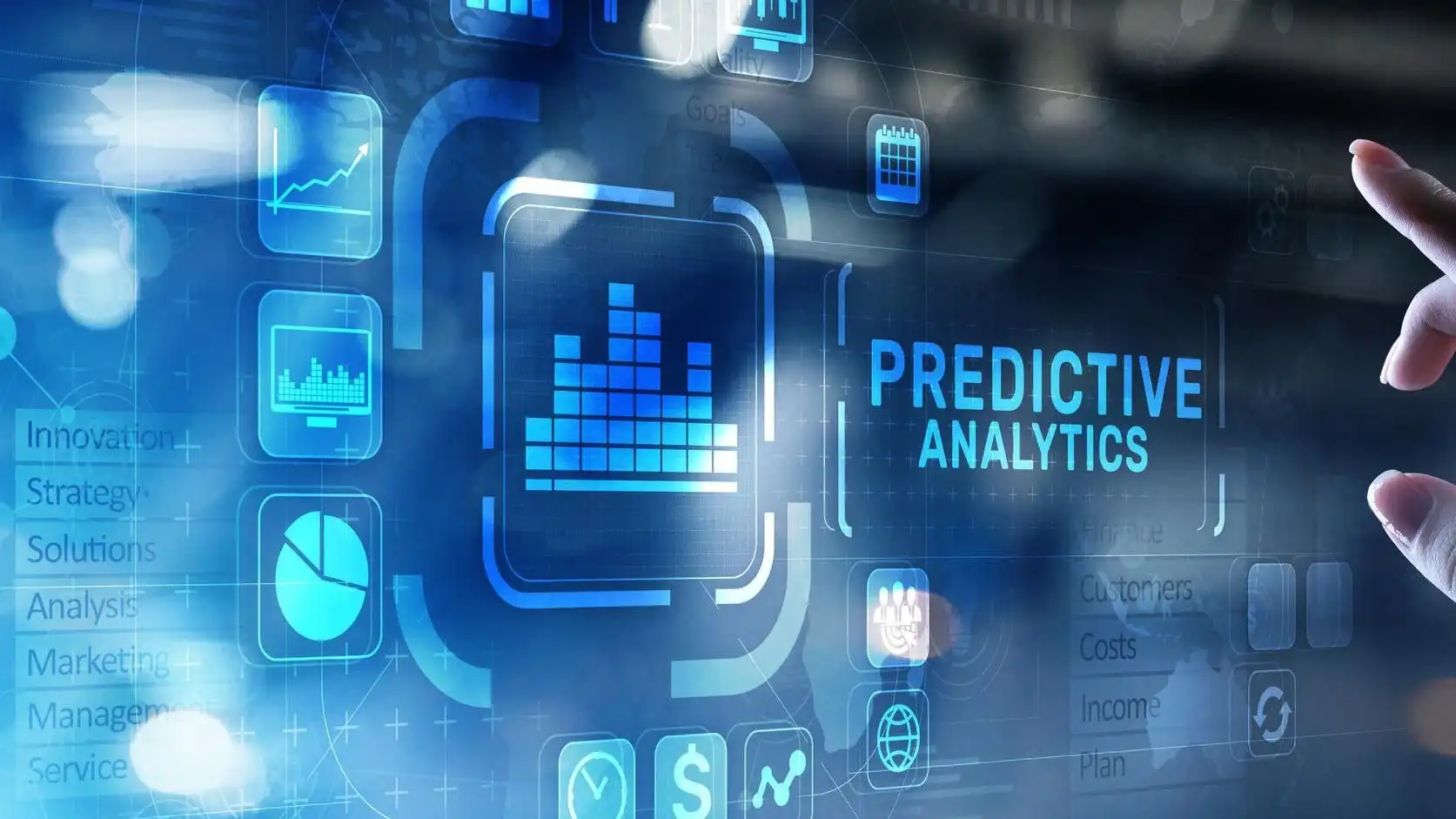
A Practical Guide to Predictive Intelligence: Anticipating Demand in Foreign Markets
Predictive intelligence is radically transforming how businesses anticipate demand in foreign markets. Today, this technology has become an essential tool for planning and executing operations in any organization.
But what exactly is predictive intelligence? It is technology that uses advanced algorithms and artificial intelligence techniques, such as machine learning, to analyze large volumes of data. Unlike generative artificial intelligence, predictive intelligence specifically focuses on identifying patterns that would go unnoticed by the human eye and projecting future scenarios with high precision. In fact, the ability to accurately forecast product demand in different international markets has a direct impact on cost reduction and operational efficiency. In this guide, we will analyze how to implement these tools to improve our market intelligence and make better decisions in international trade.
What is Predictive Intelligence and How Does It Work?
Predictive intelligence is a specialized branch of artificial intelligence that uses advanced algorithms to analyze historical data and predict future events, behaviors, or trends with high accuracy. Unlike traditional statistical methods, this technology employs sophisticated statistical analysis and machine learning to identify patterns, anticipate behaviors, and forecast upcoming events.
Differences Between Generative AI vs. Predictive AI
First, it is essential to understand that while generative artificial intelligence creates new content from existing data, predictive AI uses that same data to infer future events. This difference is substantial in its practical application:
- Generative AI: Its primary objective is to create original and novel content.
- Predictive AI: Focuses on analyzing patterns in historical data to forecast future outcomes.
The generative AI process makes it nearly impossible to understand the reasoning behind its conclusions, whereas predictive AI results are based exclusively on statistics and provided data. Therefore, predictive intelligence offers greater transparency in business decision-making.
The Role of Machine Learning in Demand Forecasting
Machine learning gives the system the ability to automatically improve its recommendations using only data, without the need for specific programming. To achieve this, algorithms search for patterns in vast amounts of information and use those identified relationships to make better decisions.
A particularly valuable aspect is that machine learning allows the incorporation of the wide variety of factors that affect demand daily. For example, weather data alone can include hundreds of variables that potentially impact consumer behavior.

How a Predictive Model Is Trained
Model training is the process of "teaching" the system to optimize its performance on a dataset of tasks relevant to its specific use case. This process begins with the collection of high-quality historical data, followed by the preparation and cleaning of this information.
During training, learning involves adjusting the model’s mathematical parameters to produce more accurate results. The goal is to minimize the loss function, which quantifies the error in the results. When this error falls below a predetermined threshold, the model is considered "trained."
In essence, the more high-quality data provided to the machine learning algorithm, the better its predictions will be. However, it is important to remember that more data is not always the best option—what truly matters is its quality and relevance.
Key Tools for Anticipating Demand in Foreign Markets
To compete successfully in foreign markets, it is necessary to master various analytical tools that allow for anticipating future demand. These technologies provide crucial insights for making informed strategic decisions.
Historical Data and Time Series Analysis
Time series are datasets collected chronologically at regular intervals, which are fundamental for understanding behavioral patterns over time. These analyses allow businesses to forecast future scenarios with high precision, thanks to the detailed study of seasonal trends and cyclical behaviors.
The main components of a time series include trend (general direction), seasonality (recurring patterns), cyclical variation (irregular fluctuations), and random variation. To analyze them effectively, models like autoregression (AR), moving average (MA), and ARIMA are used, adapting to different levels of complexity depending on the available data.
Real-Time Trend Monitoring
Real-time analysis allows for detecting rapid changes in demand and reacting to them more quickly. Modern predictive intelligence systems constantly update their forecasts based on broader datasets, making it possible to evaluate different scenarios and prepare for various outcomes.
These tools track global economic indicators that show market health and growth potential. Advanced linguistic models even extract managerial expectations from corporate documents to create predictive economic indicators, adding 4% to the R-squared value of traditional forecasting models.
Advantages and Challenges of Applying Predictive Intelligence in International Trade
The implementation of predictive systems in global operations offers significant advantages, though it also presents important challenges that must be addressed strategically to maximize effectiveness.
Reducing Uncertainty in New Markets
Diversifying into foreign markets is no longer just a competitive advantage—it’s a fundamental strategic necessity. When a company concentrates its international activity in a single region, it assumes considerable risks from changes in trade rules, new tariffs, or political instability. Predictive intelligence helps identify alternative markets with growth potential, reducing dependence on volatile areas.
By operating simultaneously in multiple countries, businesses can offset setbacks in one region with progress in others, maintaining greater resilience against unexpected fluctuations. However, this expansion must be based on reliable and segmented data, not improvisation or intuition.
Inventory and Logistics Optimization
Predictive algorithms significantly improve inventory management by analyzing seasonal patterns, consumption behaviors, and complex variables. This capability notably reduces storage costs while ensuring product availability when customers need them.
Dynamic adaptability is another crucial advantage. In the face of unexpected events, AI systems quickly adjust logistics strategies, ensuring operational agility and maintaining customer satisfaction.

Cultural and Data Barriers
Language differences constitute one of the biggest obstacles in the international implementation of predictive systems. Effective communication between members of different cultures is critical and indispensable, directly modifying productive capacity in unfamiliar contexts.
Additionally, the lack of cultural intelligence—the inability to relate to people from different backgrounds—often explains the failure of work environments in multinational organizations. A predictive model must adapt to these differences to generate relevant results.
Ethical and Privacy Considerations
Concerns about data privacy and security are particularly relevant in international settings. Collecting large amounts of information carries risks of unauthorized use or disclosure of personal data, even when anonymized.
Researchers and developers of predictive systems have a responsibility to communicate the risks derived from their work and advise on the appropriate level of public access to information, considering data sensitivity, the vulnerability of potential affected parties, and the impact of implementation.
Conclusion
Predictive intelligence is a fundamental tool for any business looking to expand globally. Throughout this article, we’ve seen how this technology allows for anticipating market behaviors that would be impossible to detect using traditional methods.
Undoubtedly, the ability to analyze complex patterns in vast volumes of data offers significant competitive advantages. Companies that implement these systems can reduce inventory costs, optimize logistics, and—most importantly—make decisions based on concrete facts rather than intuition.
The difference between failing or succeeding in a foreign market often lies in our ability to understand its unique characteristics. Therefore, the tools we’ve analyzed—from real-time monitoring to sentiment analysis—become indispensable strategic allies.
Though important challenges like cultural barriers and ethical considerations exist, the benefits far outweigh these obstacles when solutions are tailored to each specific context.
The key to success lies in understanding that predictive intelligence does not replace human judgment—it enhances it. Consequently, we should view it as a complement that enriches our strategic decision-making.
In the end, companies that combine high-quality data with well-trained predictive models will be better prepared to navigate the uncertainty of global markets, adapt quickly to unexpected changes, and seize opportunities before their competitors. This advantage, far from being temporary, will become a permanent strategic asset in an increasingly interconnected and competitive world.










